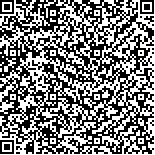| 赖雪峰,乔丽颖,杜润茗.医疗保险数据与传统登记途径对肿瘤病例的捕获比较分析:以内蒙古队列人群为例[J].中国肿瘤,2022,31(3):197-204. |
| 医疗保险数据与传统登记途径对肿瘤病例的捕获比较分析:以内蒙古队列人群为例 |
| Comparative Analysis of Cancer Case Capture Based on Medical Insurance Claim Data and Cancer Registry Data: Based on a Population-based Cohort from Inner Mongolia |
| 投稿时间:2021-09-27 |
| DOI:10.11735/j.issn.1004-0242.2022.03.A005 |
|
 |
| 中文关键词: 医疗保险数据 肿瘤登记 漏报率 内蒙古 |
| 英文关键词:claim data cancer registration omission rate Inner Mongolia |
| 基金项目:国家重点研发计划“重大慢性病非传染性疾病防控研究”重点专项(2018YFC1311704);中央引导地方科技发展资金项目(2020ZY0015);内蒙古自治区自然科学基金(2021MS08039) |
|
| 摘要点击次数: 1136 |
| 全文下载次数: 413 |
| 中文摘要: |
| 摘 要:[目的] 对比医疗保险数据和传统肿瘤登记数据捕获肿瘤病例的能力,探索整合医疗保险数据收集人群肿瘤信息的可行性。[方法] 研究基于内蒙古自治区的呼和浩特和通辽两市70 010名40~74岁的户籍居民队列人群,分别采用传统肿瘤登记途径和同时期医疗保险数据途径收集肿瘤新发病例,以两者从基线调查时间至2019年捕获的全部肿瘤病例作为全集,分别计算2种捕获方式的捕获率及漏报率,并对漏报患者的险种等特征进行比较。[结果] 2个数据库共捕获肿瘤患者365例,使用捕获-再捕获法估计的患者总数为571例,估计内蒙古自治区呼和浩特市和通辽市2019年肿瘤截缩发病率(42~76岁)为378.92/10万。医疗保险和传统肿瘤登记数据分别捕获肿瘤患者328例和86例,捕获率分别为89.86%和23.56%。在肿瘤登记数据中,享有城镇职工基本医疗保险的患者相较于享有城乡居民基本医疗保险的患者漏报率更高(85.19% vs 72.73%,P=0.007),而在医疗保险数据中,享有城镇职工基本医疗保险的患者相对漏报更少(2.47% vs 8.08%,P=0.030)。[结论] 医疗保险数据途径可有效捕获肿瘤患者,可作为传统肿瘤登记途径收集肿瘤新发病例的重要补充。 |
| 英文摘要: |
| Abstract:[Purpose] To investigate the the feasibility of integrating medical insurance claim data for cancer information of the whole population through comparison of claim data and cancer re-gistry data to capture cancer cases. [Methods] The follow-up data of cancer registry and medical insurance claim data from baseline time to 2019 based on a cohort of 70 010 urban residents aged 40~74 years from Hohhot and Tongliao of Inner Mongolia Autonomous Region were collected. The cancer cases captured by the two databases were used as the complete set to calculate the capture rate and the omission rate, and the characteristics such as categories of insurance of under-report cases were analyzed. [Results] A total of 365 cancer patients were identified from the two databases from baseline time to 2019, and the estimated patients by capture-recapture was 571. The estimated truncate cancer incidence(42~76 years old) in Hohhot and Tongliao in 2019 was 378.92/105. The claim data and cancer registry data identified 328 and 86 cancer patients, and the capture rates were 89.86% and 23.56%, respectively. In cancer registry data the omission rate of patients with basic medical insurance for urban employees was higher than that of patients with basic medical insurance for urban and rural residents (85.19% vs 72.73%,P=0.007), while in medical insurance claim data the missing report rate of patients with basic medical insurance for urban employees was lower (2.47% vs 8.08%,P=0.030). [Conclusion] Medical insurance claim data is an efficient source for identifying cancer cases and can be used as an important supplement to traditional cancer registry data to capture new cancer cases. |
|
在线阅读
查看全文 查看/发表评论 下载PDF阅读器 |